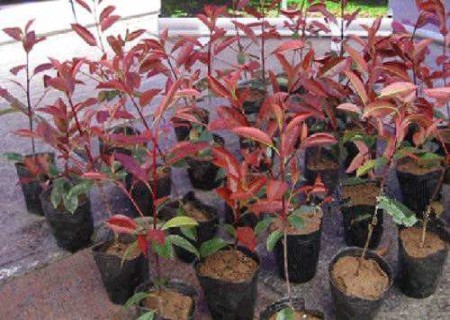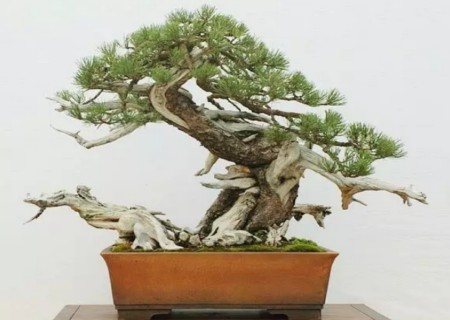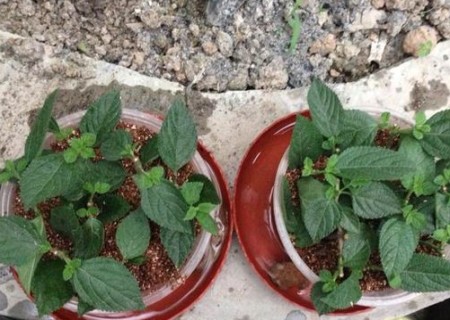Cutting technique of Photinia rugosa
Photinia rugosa is the general name of hybrid varieties of Photinaceae, and its leaf color can change with the change of the new and old degree of leaf growth, and its ornamental value is very high, especially in spring and autumn, the new shoots and young leaves germinated are as red as fire and bright. They are often used for landscaping, but they can also be planted as potted plants.

Photinia przewalskii grows very rapidly in an environment with adequate water and nutrient supply, especially in the seedling growth period. And this plant has a strong ability to adapt to the growth environment, can tolerate low temperature, drought, barren and pruning, and its germination ability is also very strong, especially in germination, which is incomparable to many plants. Therefore, Photinia can be pruned to make the plant into a short shrub for pot planting.
For family potted plants, the propagation of Photinia chinensis requires simple process, convenient operation and high survival rate, so it is recommended to propagate by cutting. Today, the editor will talk about the cutting propagation method of Photinia rubra.
1. Nursery bed selection
The culture soil used to make seedling bed is required to be loose, fertile and well drained. At the same time, an appropriate amount of mature farm manure is added as base fertilizer, which is evenly mixed with the culture soil. If there are conditions, you can also add some old bran ash, which can increase the water and air permeability of the soil. It is recommended to use sandy and slightly acidic soil, so that the leaves of Photinia chinensis plants will be brighter.
2. Cuttings selection
When selecting Photinia rubra, it is recommended to select branches with strong growth and full terminal buds as cuttings, cut about 5-8 cm in length, to ensure that there are more than one terminal bud and leaves on the cuttings, and other redundant terminal buds and leaves can be removed.
3. Cutting cuttings
It is recommended to use sterilized special scissors, so that the cut wound is smaller than that caused by ordinary scissors, and the phloem part of the branch is inward, and the wood part is concave to the center, so it is easier to produce wound healing tissue, promote rooting and improve the survival rate of cuttings.
4. Cuttings treatment
Prepare the rooting solution, and then soak the trimmed cuttings in the rooting solution for a few seconds before cutting, usually soaking the end of the cuttings for 3-5 seconds, do not let the soaking time is too long, otherwise the effect is counterproductive.
5. Cutting process
For the cutting of Photinia rubra, it is recommended to cut along with cutting to shorten the time from pruning to cutting as much as possible. When cutting, pay attention to the density should not be too large, to ensure that there will not be cross and overlap between leaves. The cutting distance should be kept at 5-6 cm, the cutting depth should be kept at 4-6 cm, the branches outside the soil should have more than one terminal bud and leaves, and the branches should be in close contact with the soil without gaps.
6. Maintenance and management
The temperature and humidity of the seedling bed are the most critical factors to ensure the success of cutting. The temperature should be kept between 25-28 ℃, the soil moisture should be kept at about 60%, and the air humidity should be kept above 95%. Therefore, in this process, maintenance and management measures must be done in place, especially in the control of temperature and humidity. As long as the maintenance and management is proper, the survival of the plant can be seen in about 1 month.
In addition to temperature and humidity, it is necessary to gradually increase light and supplement nutrients after seedling rooting, which is suitable for spraying foliar fertilizer or watering thin water-soluble chemical fertilizer. Of course, in addition to light, temperature, water and fertilizer, we also need to do a good job in the prevention and treatment of diseases and insect pests.
Note:
The cutting of Photinia chinensis needs to master certain techniques, in which the control of temperature is very important. The most suitable cutting temperature is about 25 °C. if the soil temperature is higher than the air temperature, then the rooting speed of cuttings is faster than sprouting; if the soil temperature is lower than the air temperature, then the rooting rate of cuttings is slower than sprouting, but this is very unfavorable to the survival of cuttings. Therefore, in terms of temperature, we should strictly control and maintain the best temperature to improve the survival rate of cutting.
Time: 2019-06-08 Click:
- Prev

Modeling skills of Pine Bonsai
Pine bonsai is characterized by magnificence and masculinity, but it has strong drought tolerance and likes to grow in a soil environment with good air permeability and drainage. The modeling process of pine bonsai is a process of artistic creation.
- Next

Cutting methods of Prunus mume
Five-colored plum, a small evergreen shrub also known as Lantana, often emits a special smell and is rich in color. The flowers of five-colored plum are composed of many small flowers, which are composed of yellow, red, pink, orange, blue and other colors. Each inflorescence shows six colorless colors.
Related
- Fuxing push coffee new agricultural production and marketing class: lack of small-scale processing plants
- Jujube rice field leisure farm deep ploughing Yilan for five years to create a space for organic food and play
- Nongyu Farm-A trial of organic papaya for brave women with advanced technology
- Four points for attention in the prevention and control of diseases and insect pests of edible fungi
- How to add nutrient solution to Edible Fungi
- Is there any good way to control edible fungus mites?
- Open Inoculation Technology of Edible Fungi
- Is there any clever way to use fertilizer for edible fungus in winter?
- What agents are used to kill the pathogens of edible fungi in the mushroom shed?
- Rapid drying of Edible Fungi

